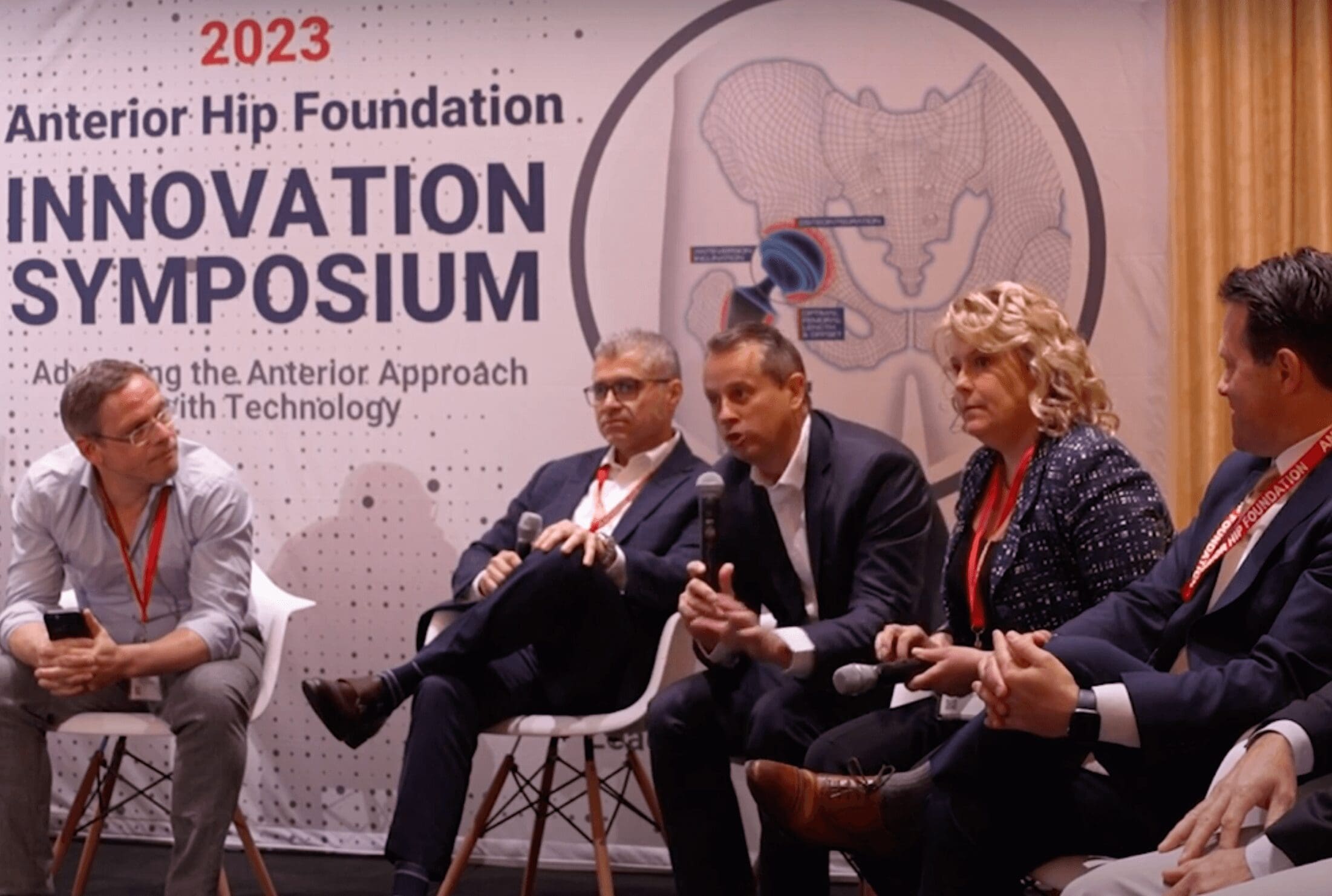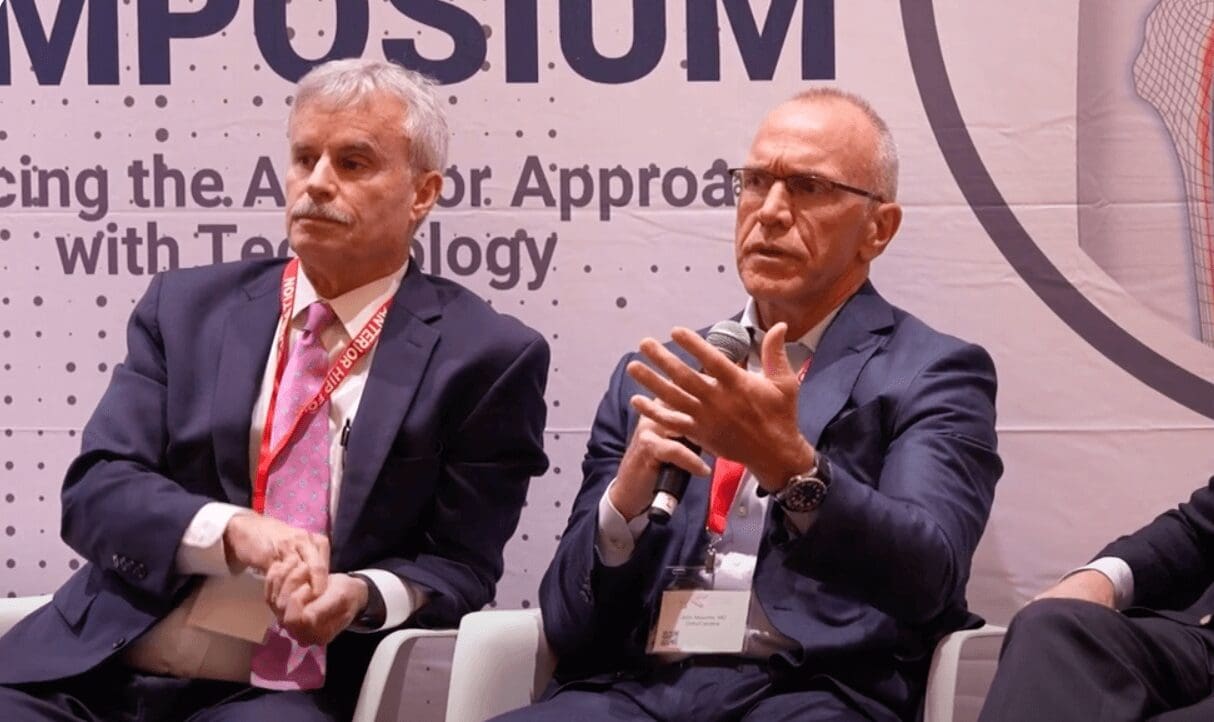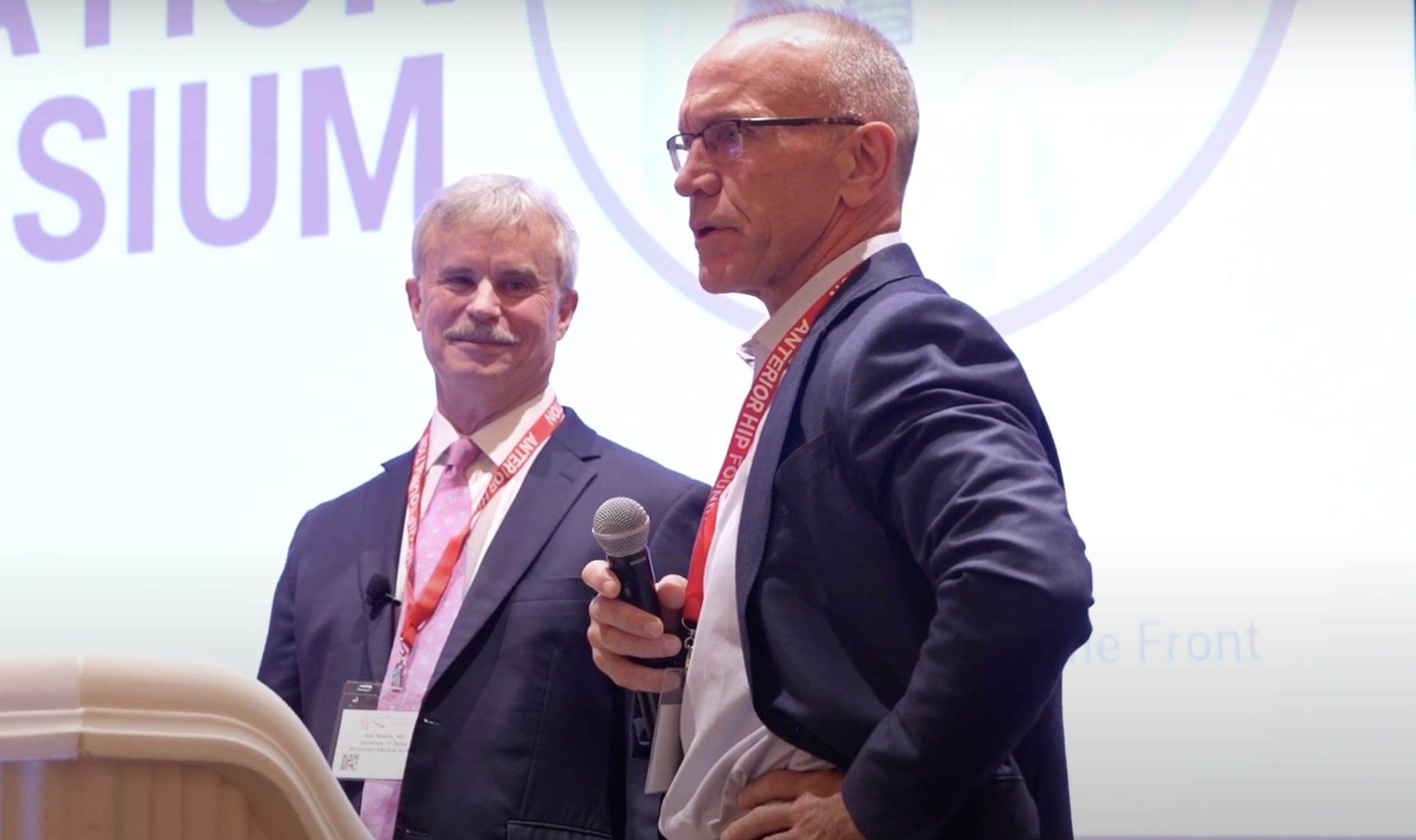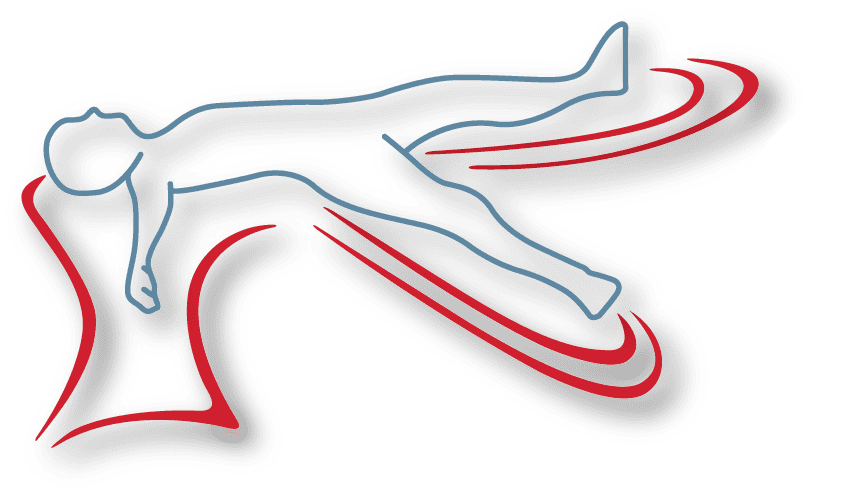Femoral Revision Through the Anterior Approach
The fifth and final lecture in this series on anterior approach hip replacement focuses on femoral revisions from the anterior approach and includes video demonstrations of many of the techniques described.
Generally, the femur is considered to be the side that most people initially struggle with when performing a primary anterior approach total hip. However, with more experience, you’ll find femoral revision can be achieved with consistency and reproducibility. It is of course a huge, complex subject, but this lecture aims to share some considerations.
Any surgeon who performs a reasonable number of total hips is likely to experience periprosthetic fracture (PPF). According to a recent article in the UK National joint registry, periprosthetic femur fractures were the third most common cause for revision. And interestingly, the incidence has doubled in just under 10 years.
Dr. Yerasimides has seen the same trend in his own practice – more PPF and subsidence compared to when he was training as a resident. Why is this?
His theory is that postoperative protocols have evolved and affected the performance of stems that once worked well. Until 20 years ago it was normal for patients to be toe touch weight bearing for 4-6 weeks post operatively. That means that the stems had bone ongrowth before they were loaded. Now the implants are being loaded right from the beginning. We’re performing outpatient hips, patients are fully load bearing immediately and we’re getting people off any aids at 2-3 weeks. Wedge taper stems that once were the gold standard and had excellent results are now shown in multiple registries and papers to have the highest risk for failure in the early postoperative period. This change in postoperative protocols has brought forth an era of collared uncemented stems to provide additional stability, preventing subsidence and micromotion and allowing bone ongrowth.
Femoral Fractures
When handling femoral fractures, the first question is, are we doing ORIF with plate and cables or ORIF with revision of the femoral components? To determine your approach you want to consider the stability of the implant.
Dr. Yerasimides walks through a femoral revision. In the example, he uses a clamp to reduce the fracture and a standard cable fixation of the femur as the patient in question has healthy cortices. Typically, he adds two cables – one around the distal portion of the fracture and then one higher, either just below or just above the lesser trochanter. An additional prophylactic cable can be placed just distal to the fracture before insertion of a long revision stem. The bone preparation is the same whether you use a modular or a non-modular stem.
This case is an early periprosthetic fracture so there’s no need for any releases in addition to what has already been performed for the standard total hip. The obdurator externus is preserved, he’s taken down the conjoined tendon and has cleared off over the tip of the trochanter for access .
The Distal Potted Stem
This is a term that just wasn’t in standard vocabulary 15 years ago, but since then, the fully HA coated stems like Corail or Avenir have become more and more popular. These bring the potential for the implants to implanted with tight distal fixation and poor proximal fixation causing a mismatch in mechanical stability and distal ongrowth only.
These are very difficult stems to revise because the distal fixation is the most challenging part to reach. It’s common to perform an extended trochanteric osteotomy to get this implant out. But we know if our fragment breaks into two, the separated piece of the trochanter can migrate and cause significant problems with gait down the road..
To avoid doing a full ETO and removing the greater trochanter when the problem is distal fixation only, he uses a technique for distal potted stems that he refers to as a femoral cortical window – this essentially accesses only the part of the stem that’s the issue.
Removing Well Fixed Implants
Flexible osteotomes are very popular, however Dr. Yerasimides uses these less often as you’ll often find that the flexible osteotomes don’t always follow the side of the implant. Sometimes they diverge and can cause fractures through the femoral cortex.
Dr. Yerasimides preferred tool is the high speed burr. His favorite tip is what he calls a router tip . He uses one that it is three and a half centimeters long with a diameter of three millimeters. It’s a side cutting tip so you can bury it down the side of the implant and work around the proximal portion of the stem. This allows you to easily remove the top three and a half centimeters of bone interface from an implant – and if you are dealing with a proximal coated only implant like a wedge taper stem – that’s really about all you need to remove it. For fully HA coated implants like Corail, you can additionally feed smooth Steinmann pins down the side of the implant to attempt to break the distal bone interface.
Key elements for removing well-fixed stems
- Good Exposure is crucial – You should aim to spend around 75% of the surgical time on exposure and releases. Dr. Yerasimides releases the entire femur including the posterior femur before attempting dislocation. There is no substitute for good exposure with revision surgery. Take your time and make sure you have good hemostasis from one layer to the next before moving onto the next step.
- Use a high-speed burr – Dr. Yerasimides uses an acorn or a round ball around the proximal femur to remove bony overgrowth around the stem. Once he can see all borders of the top of the stem, he uses a tapered or router tip to remove bone from the bone/implant interface.
- Hit down on the implant. It sounds a little counter-intuitive, but Dr. Yerasimides hits down on the implant with a bone tamp or inserter handle. The object is to disrupt the bone/implant interface and you can deliver more force downward with a mallet than upward with a slap hammer. Once you have broken the bone/ implant interface you attach a back slap hammer to take it out. Remove the bone of the medial calcar under the collar if present.
Modified Wagner Osteotomy
Wagner osteotomies have typically been used by anterolateral revision surgeons. The traditional Wagner osteotomy removes the anterior third of the femur splitting the trochanter in a coronal plane. The Modified Wagner osteotomy aims to preserve the greater trochanter while still gaining access to the well-fixed parts of the component in the subtrochanteric and diaphyseal part of the femur. There are five basic cuts involved:
1. direct anterior oblique cut
2. lateral
3. distal anterior cut
4 & 5 distal and proximal medial cuts.
In conclusion, there will be a great deal of information shared, and a number of tips and tricks that Dr. Yerasimides has learned along the way. However, there’s nothing more valuable than experience. You will run into challenges as you embark on a variety of revision surgeries – but each one will make you a better surgeon. Keep pushing forward with this surgery!






